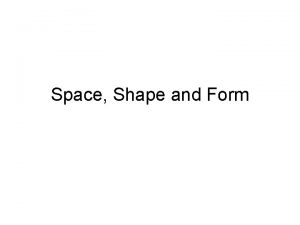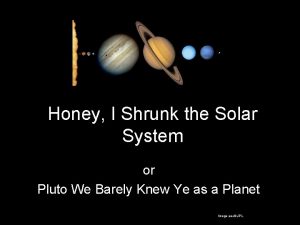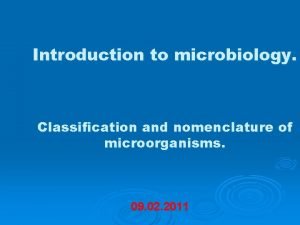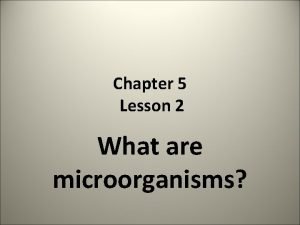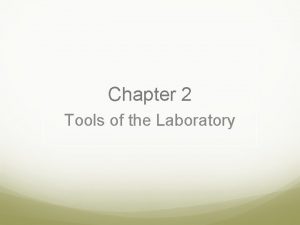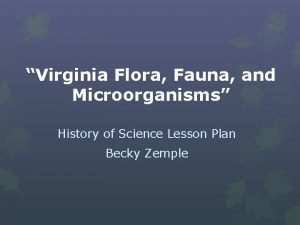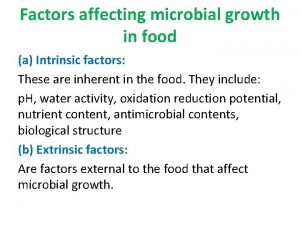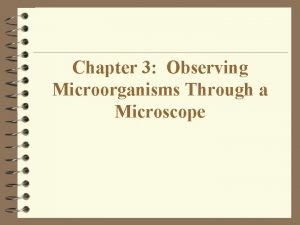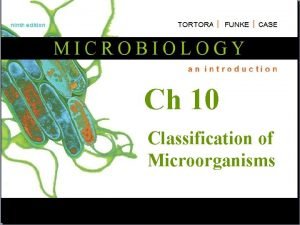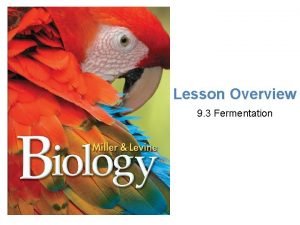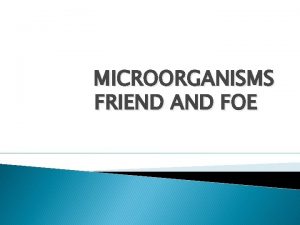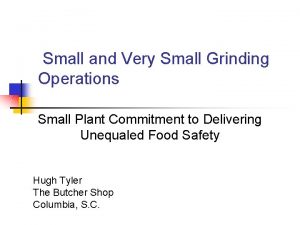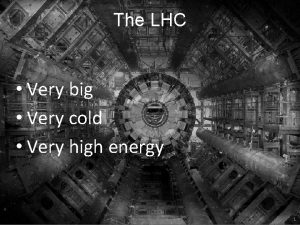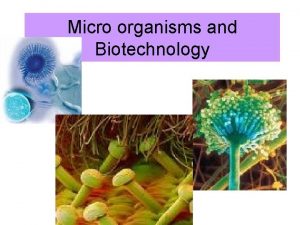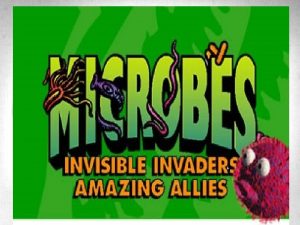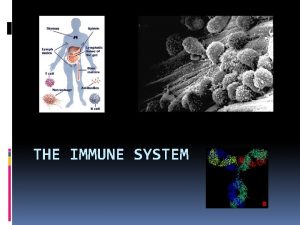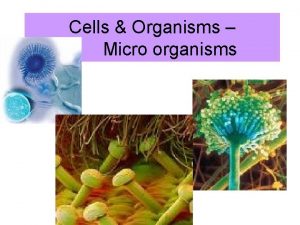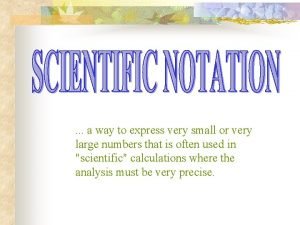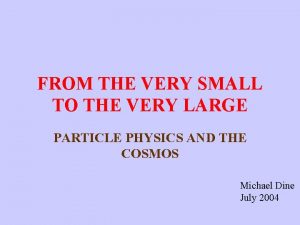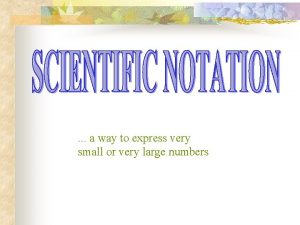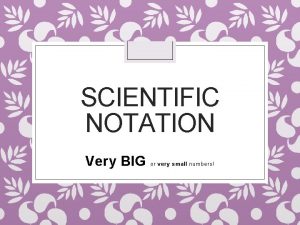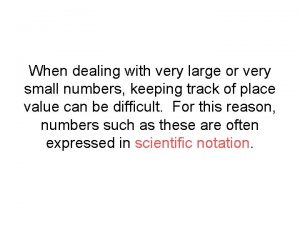MicroOrganisms Chapter 20 MicroOrganisms Microorganisms are very small



















- Slides: 19

Micro-Organisms Chapter 20

Micro-Organisms • Micro-organisms are very small organisms. • Most are to small to see with the naked eye and we need a microscope. • Micro-organisms are found almost everywhere air, water, our skin and our gut.

Micro-organisms • There are 3 types of micro-organism – Viruses – Bacteria – Fungi

Viruses

Viruses • Viruses are the smallest of the microorganisms. • They cannot be seen with a microscope. • Viruses are a chemical surrounded by a protein coat. • Viruses do not feed, respire, grow or move they only reproduce.

Viruses

Viruses • Viruses only reproduce by invading living cells, which they take over and kill. • Therefore all viruses are harmful and cause disease to plants and animals. • Viruses are parasites.

Illness caused by viruses • Cold sore • Flu • Chicken pox http: //i. ehow. com/images/Global. Photo/Articles/ 2041461/cold-sore-crop_Full. jpg • AIDS • Measles http: //cache. eb. com/eb/image? id=82674&rend. Type. Id=4

Bacteria http: //www. bact. wisc. edu/themicrobialworld/C. bot. Spores. jpg

Bacteria are simple living cells. Bacteria feed, move, respire and reproduce. Bacteria live almost everywhere. Most bacteria are harmless they even do us good. • Other bacteria is harmful and causes disease. • •

Benefits of Bacteria • Soil Nutrients – Soil bacteria decompose the remains of dead plants and animals, this releases nutrients back into the soil. • Decay of wastes - Bacteria are used in sewage treatment to break down wastes and make them harmless. • Cheese and yogurt - bacteria are used in the making of cheese and yogurt.

Benefits of Bacteria • Silage – Bacteria break down grass into silage which is used for feeding cattle.

Harmful Effects of Bacteria • Disease – bacteria causes diseases such as food poisoning, pneumonia, meningitis and appendicitis. • Food spoilage – • Tooth Decay –

Fungi • 3 Types –Yeast (single cell) –Bread mould (long threads) –Mushrooms (large structures)

Fungi • Most fungi live on dead organisms bread and fruit • Some fungi are parasites and cause disease.

Benefits of Fungi • Some large fungi are edible (Food) • Brewing – Yeast is used to make alcohol. • Baking – Yeast is added to dough in baking. • Antibiotics – The fungus penicillium is used to make penicillin.

Harmful effects of Fungi • Disease – some fungi cause disease e. g. athletes foot and ringworm. • Food Spoilage – some fungi cause food to spoil e. g. bread mould. • Poisonous – Some fungi are poisonous i. e. certain toadstools.

Soil Micro-organisms • Some micro-organisms break down the dead remains of plants and animals and release nutrients back into the soil. • These are known as decomposers.

Biotechnology • Biotechnology involves using living things like micro-organisms to make substances useful to humans. • Examples Industry: – Yeast in baking and brewing. – Bacteria in cheese and yoghurt. • Examples in medicine: – Bacteria to make insulin – Penicillium to make penicillin.
 Antigentest åre
Antigentest åre Used to express very large or very small numbers
Used to express very large or very small numbers Very bad to very good scale
Very bad to very good scale Few fewfewf
Few fewfewf Receiving table/area
Receiving table/area Quantifiers for food
Quantifiers for food Small areas of white used to show the very brightest spots
Small areas of white used to show the very brightest spots Sistema solar
Sistema solar Atoms are very small
Atoms are very small Learning objectives of microorganisms
Learning objectives of microorganisms Importance of microbes
Importance of microbes Are microorganisms helpful or harmful
Are microorganisms helpful or harmful Harmful microorganisms
Harmful microorganisms The five i's of studying microorganisms
The five i's of studying microorganisms Flora fauna and microorganisms
Flora fauna and microorganisms Intrinsic factors affecting microbial growth in food
Intrinsic factors affecting microbial growth in food Limitations of light microscope
Limitations of light microscope Microorganisms meaning
Microorganisms meaning Microorganisms 5th grade
Microorganisms 5th grade Types of fermentation
Types of fermentation






